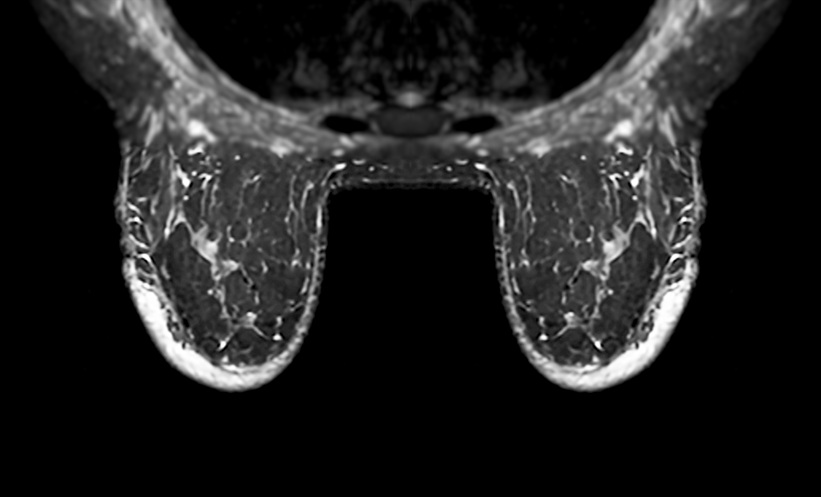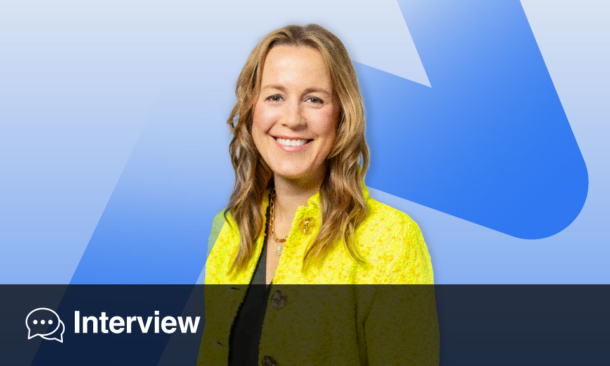Sarah Blagden | Professor of Experimental Oncology, University of Oxford, UK
Citation: EMJ Oncol. 2024;12[1]:101-104. https://doi.org/10.33590/emjoncol/KMZD3427.
![]()
Can you share a bit about your journey into oncology research?
I decided to be an oncologist when I was in medical school, mainly because of the inspiring oncologists I met in training and also my grandmother’s diagnosis of advanced cancer at the same time. It was humbling to see how Bob Phillips, a clinical oncologist, interacted with his patients. He combined a comprehensive understanding of cancer science with emotional intelligence in a fabulous bedside manner. Medical oncology appealed to me not only for its academic focus on cancer, but also for its anarchic approach. However, as a junior doctor, I didn’t feel particularly academic. With not-so-subtle encouragement from my mentor Helena Earl, I agreed to visit some labs in Cambridge, UK, and was intrigued by the marble-lined Department of Genetics and its strong aroma of fruit fly media. With support from Cancer Research UK (CRUK), I started working on a PhD characterising a gene LARP (then with the whimsical name ‘meteor’) in fruit flies. This was in 1999, just before the human genome was sequenced, so it was possible to dedicate an entire PhD to uncovering a single gene. And with only four pairs of chromosomes in a fruit fly, how hard could it be? Turns out it was a very complex few years of fruit fly crossing schedules, failed western blots, and endless days of time-lapse confocal microscopy. I look back on those lab years as my personal ‘tempus horribilis’, but somewhere along the way I made a small scientific discovery and felt a euphoria I had never experienced before. That was the beginning of my ‘discovery addiction’ and I’ve been chasing those highs ever since.
What motivated you to transition from clinical practice to a focus on translational research?
After my stint in Cambridge, I was left with a feeling of unfinished business. I needed to clone the human homologue of LARP and understand what it did. I couldn’t convince funders to support me as a clinician-scientist, so I switched to working in early-phase trials, which was the nearest I could get to basic research without having my own lab. I was fortunate to spend a year at the Institute of Cancer Research’s (ICR) Early Trials Unit under the leadership of Stan Kaye and Johann de Bono. It was at the dawn of precision oncology, and we were testing the first poly (ADP-ribose) polymerase (PARP) inhibitors, abiraterone, and later immunotherapy on patients with advanced cancers. One of the first studies I worked on was a clinical trial of a polo kinase inhibitor; polo had been discovered in my old fruit fly lab, and it left me convinced that good basic research can quickly move into clinical trials. However, the path from Phase I trials to changing clinical practice was slow, so slow, and an urgent need to bring innovations to patients has motivated me ever since.
Your career has spanned several prestigious institutions, from Addenbrooke’s Hospital to Oxford University. How have your experiences at these various institutions influenced your approach to oncology research and clinical trials?
I had my two children comparatively late, so I was able to be fairly footloose during my oncology training. I grew up as an army child, so I have an innate wanderlust acquired from our three-yearly posting schedule. The advantage of working in so many places (if I count from house jobs onwards, Oxford is my 12th hospital so far) is you meet many inspiring people and learn a lot about organisational cultures. Some things hold true to all: there are pockets of brilliance, IT systems are slow, some staff are disgruntled and others are ruthless political movers, and most hate change. The leadership team is massively influential on the institution’s culture. Moving around teaches you about yourself as well. I realise I enjoy innovating, and I need to work somewhere that gives me space to do this.
Your research began with a CRUK Junior Clinician Scientist PhD fellowship focused on fruit fly genetics. How has your background in genetics shaped your current work in oncology, particularly in the area of post-transcriptional gene regulation?
The conclusion at the end of my PhD was that LARP was an RNA binding protein (RBP), a class of proteins that were assumed at the time to be “boring chaperones”. I found it intriguing that these proteins could bind to mRNA and literally thwart them from synthesising proteins. RBPs directly contradict the linear central dogma that “DNA makes RNA, and RNA makes protein”. It is a dynamic relationship with proteins altering both RNA and DNA expression. This idea was counterculture to the majority of research in the early 2000s, in which cancer was solidified under the definition of being a “disease of the genome”. The recent evolution of RNA sequencing and proteomics is challenging that, but in my opinion, we are still too fixated on the genome in clinical practice and are missing what is actually going on in the cell. My own contribution to challenging that reductionism has been to launch a lab exploring RNA biology in cancer and founding the LARP Society, an unapologetically nerdy collective for people working on the LARP gene family around the world.
At Imperial College, you launched the Early Phase Trial portfolio and established a laboratory focused on the dysregulation of mRNA translation in cancer. Could you elaborate on the significance of mRNA translation in cancer progression and how your work has advanced this field?
We know that cancer starts with a driver genetic mutation in an individual cell, and we know that other events like pollution are added into the mix to make that cell transition to cancer, but we still don’t know how those two events conspire. It is a bit like laying down a fire; you put the kindling in and you add the firelighters, but still need to light the match. Our research shows that, in some contexts, RNA-binding proteins provide the flames that ignite and maintain the fire. These findings have led my lab to switch focus to researching tumorigenesis (the process of normal cells becoming cancerous). However, at that time I was still testing drugs on people with advanced cancer. Targeted therapies can seem depressingly futile in someone with an advanced cancer that is complex, molecularly messy, and progressing at pace. This got me thinking about preventing cancer, using our collective knowledge to stop cancers from starting and redesigning clinical trials to provide a modern infrastructure for testing them.
Your research has a particular focus on Precision Prevention studies. How do you see this area evolving in the next decade, and what role do you anticipate it will play in the future of cancer treatment?
Having dipped my toe into tumorigenesis research, I was surprised to learn just how many cancers take years or even decades to develop in our bodies. The problem is most precancers are clinically invisible while they are undergoing this transition to cancer, they are too small to be seen on X-rays or CT scans and no biomarkers have yet been developed to reliably detect them. This 5–10-year window is a massive, currently missed opportunity to intercept and prevent cancers from starting. But there is a chicken and egg problem; how can you design drugs to treat precancers if you don’t understand the biology, and how can you test drugs to prevent cancer if you cannot measure what you are treating? We held a consultation with the scientists in Oxford to measure the level of enthusiasm for tackling this challenge, and the room was full. Scientists from across the city had made important discoveries around tumorigenesis and were keen to see them tested in the clinic. We see a similar levels of enthusiasm at national and international meetings. Sometimes, a clinical plan can galvanise and focus research. Precision Prevention studies are small, very biologically focused trials of drugs in people at high risk of cancer. Their design makes them quicker than conventional population-based studies that need to recruit tens of thousands of patients and wait for decades to get an answer. I don’t think Precision Prevention trials should (or could) dominate research in the next decade, but they certainly have a place in the pantheon of clinical drug development and have a realistic chance of accelerating biology into the clinic.
Given your extensive experience in both clinical and experimental oncology, what advice would you give to young oncologists and researchers looking to make a meaningful impact in the field of cancer research?
Early in my career, I was too influenced by the opinions of others, and it took me a long time to believe in myself. Now, I’m delighted if someone tells me: “It can’t be done”; it’s a green light! I look back and see my career has transitioned from being mostly National Health Service (NHS) to almost completely academic but has never been boring or predictable. I’d advise young researchers to go with the flow and be prepared to switch career direction if opportunities arise. My father had quite a strong influence on me, and he left the army as a Brigadier in his 50s to become a mine clearance expert. He described a mixture of stage fright and imposter syndrome before entering a minefield. He taught me that you will always be surrounded by internal and external critics, but if you sincerely believe something needs to be done, you have no choice but to do it anyway.
What do you believe are the biggest challenges in translating research findings into clinical practice?
Our biggest and most exciting challenge in oncology is to make cancer a predictable and preventable disease. To achieve this, we need to tear up the rule book and work together rather than in silos, embracing multiple disciplines, and involving the opinions of the patients and the public themselves. It feels like we are assembling our very own Mathematical Bridge (like the one in Cambridge), the interlocking of many straight beams so that they collectively arch, connecting where we are today to where we want to be in the future.








